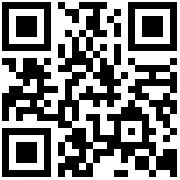In 1901, Ott, a gynaecologist in Petersburg, Russia, made a small incision in the anterior wall of the abdomen, inserted a vaginal device into the abdominal cavity, reflected the light into the abdominal cavity with a cephaloscope, examined the abdominal cavity, and called the examination a laparoscopy. . In the same year, German surgeon Kelling inserted a cystoscope into the abdominal cavity of the dog for examination, which was called endoscopic laparoscopic examination. In 1910, Jacobeaus of Stockholm, Sweden, used the term laparoscopy for the first time. He used a trocar to make a pneumoperitoneum. In 1911, Bernhein, a surgeon at Johns Hopkins Hospital in the United States, inserted a rectaloscope into the abdominal cavity through an incision in the abdominal wall and used the emitted light as a light source. In 1924, a physician in Kansas, USA, inserted a nasopharyngeal mirror into the abdominal cavity of a dog and recommended a rubber gasket to help close the puncture cannula to avoid air leaks during operation. In 1938, the Norwegian surgeon Veress introduced a gas injection needle that can be safely made into a pneumothorax. When doing pneumoperitoneum, it can prevent the needle tip from damaging the internal organs under the needle. The idea of making a pneumoperitoneum with a compromised safety puncture needle is generally accepted and is still in use today. The inventor of the truly targeted abdominal examination was the German gastroenterologist Kalk who invented a lens system with a 135° straight strabismus. He is believed to be the founder of laparoscopic surgery for the diagnosis of liver and gallbladder disease in Germany. In 1929 he first advocated the use of double-sleeve puncture needle technology. In 1972, the American Gynecologic Laparoscopic Physician Association planned to complete nearly 500,000 cases of abdominal examination in the next few years. This type of examination has been widely accepted by gynecologists. Nearly one-third of gynecologic operations at the Cedars-Sniai Medical Center in Los Angeles use diagnostic or therapeutic laparoscopy. In 1986, Cuschieri began an animal experiment of laparoscopic cholecystectomy. In the first World Congress of Surgery Endoscopy in 1988, he reported that a laboratory animal was successfully treated with laparoscopy for cholecystectomy. It was applied to the clinic in February 1989. Philipe Mouret, a French surgeon who succeeded in laparoscopic cholecystectomy for the first time in humans, succeeded in performing laparoscopic cholecystectomy in the same patient in 1987 with laparoscopic treatment of gynecological diseases, but did not report it. In May 1988, Dubois of Paris was also used in clinical trials based on laparoscopic cholecystectomy in pigs. The results were first published in France and screened at the annual meeting of the American Society of Digestive Endoscopy in April 1989. The video made a sensation in the world. It first shocked the surgical community in the United States, and the upsurge of laparoscopic cholecystectomy in the United States led to laparoscopic cholecystectomy from the animal experiment, clinical exploration stage to the clinical development stage. In February 1991, Zhai Zuwu completed the first laparoscopic cholecystectomy in China, which is the first laparoscopic surgery in China.
Sep 28, 2019Leave a message
History Of Laparoscopy
Send Inquiry







